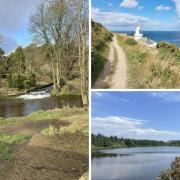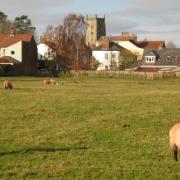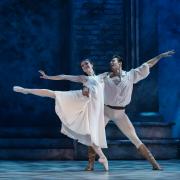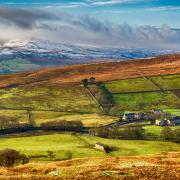There are more than 180 days of horse racing at Yorkshire’s nine courses to look forward to this season, as Terry Fletcher discover

If for you the arrival of spring sunshine heralds thundering hooves and a pulse-quickening flutter at the bookies with all the excitement and glamour of a day at the races, you are far from alone. Last year more than a million race goers flocked to Yorkshire’s courses and this year it is hoped even more will be crowding the rails and the grandstands for a glorious summer of sport.

With no fewer than nine courses, thousands of horses in training - mainly in yards around Middleham and Malton - and more than 2,000 jobs depending on it, racing in Yorkshire is big business. Academics at Sheffield Hallam University have estimated it is worth around £230m to the county’s economy, including £30m spent off the course at the hotels where race goers stay for the big events and in the restaurants where they gather to celebrate their successes and drown their losses. No wonder Gary Verity of Welcome to Yorkshire says: ‘Horse racing is part of the lifeblood of Yorkshire.’
Graham Orange of Go Racing in Yorkshire, the sport’s umbrella group, admits that last year’s fine summer played its part in pushing attendances past the million mark but just as important were the special events which have transformed the once so-called Sport of Kings into a Sport for All with a growing mass appeal. These include not only the ever-popular ladies’ days when fashion and finery take centre stage alongside form and good fortune but a string of other themed days scattered throughout the calendar and across the county. To make it easier for everyone to enjoy the thrill of live racing there are Saturday, Sunday and Bank Holiday meetings as well as evening races at every course. Family Days are also now a feature of every course’s programme and have proved a huge success with most admitting accompanied children free to the enclosures. Most are held around weekend fixtures with special events during the long school holidays. A variety of family attractions are built into the programme to make sure it is a great day out for everyone.
Top class live music has also become part of the mix with big name bands performing to keep the day’s entertainment going on long into the night. This year veteran rockers Status Quo will be playing at Doncaster’s Town Moor course at the end of evening racing on Saturday May 17th, while Leeds own stars, the Kaiser Chiefs will be the attraction there after the June 28th meeting and James Blunt on August 16th. York, arguably the county’s most prestigious course, is also getting in on the act with a Music Showcase weekend featuring legendary American band the Beach Boys on July 25th and Britain’s Wet Wet Wet the following evening.
But all the innovation, no matter how clever, would be wasted if it were not underpinned by top quality racing. The nine courses, mostly strung down the spine of the A1 from Catterick in the north to Doncaster in the south with outposts at Redcar and Beverley, will stage more than 180 days of racing this year. Catterick, Wetherby and Doncaster also host winter races over the jumps but it is once the Flat Season gets underway that the county really comes into its own with Beverley, Pontefract, Redcar, Ripon, Thirsk and York staging meetings. And among them are some of the most prestigious in the national racing calendar.
The first of the big races is the Dante Stakes run in May at York, which in August also hosts the Ebor, one of the country’s richest horse races and attracting a top class field. The Ebor meeting also includes the Yorkshire Oaks, which coincides with Ladies’ Day at the course and the chance for everyone to dress to impress. Other highlights of the season include the Zetland at Redcar, the Hilary Needler Trophy at Beverley and the Great St Wilfrid Handicap at Ripon.
The Flat Season climaxes at Doncaster in September with the St Leger, the last of the season’s five national Classics, which get underway with the 2,000 Guineas at Newmarket on May 3rd followed by the 1,000 Guineas, Epsom Oaks and the Derby. But the St Leger has a longer pedigree than them all as the world’s oldest Classic horse race. It was first run in 1776 on Cantley Common near Doncaster but moved to its present home on Town Moor in 1778. It has proved so popular that St Legers are now staged across the world including Japan, Australia and New Zealand.
Doncaster also has the honour of wrapping up the season in November when the champion jockey will be crowned.
It all adds up to a fabulous festival of sport. All it needs now is the weather and the crowds to make it perfect.
For a full list of all Yorkshire’s meetings this season and information about all nine Yorkshire courses visit goracing.co.uk



























